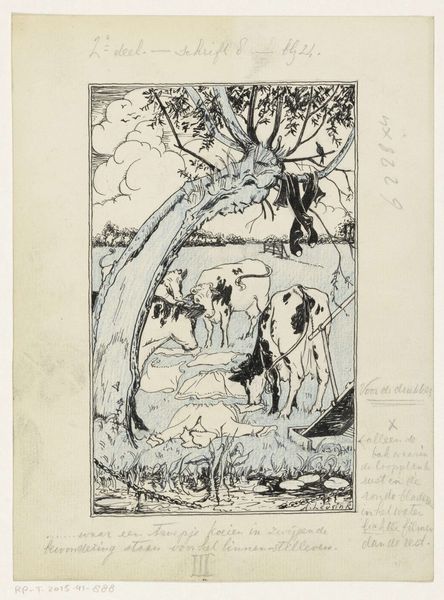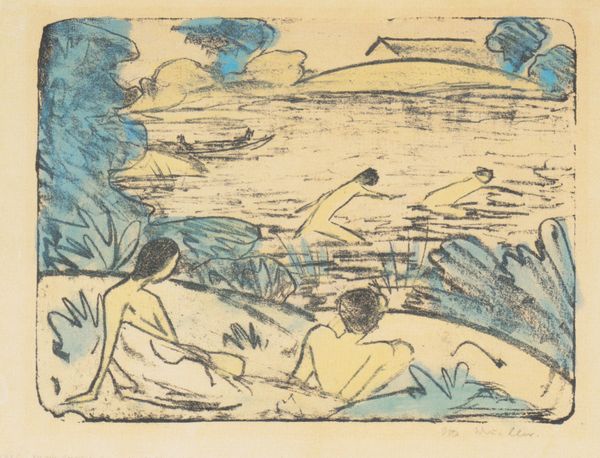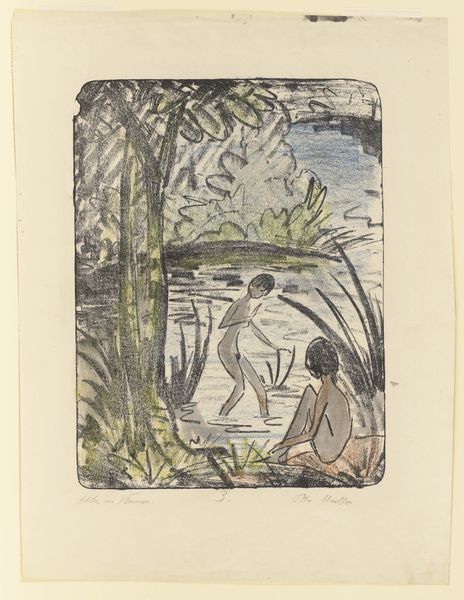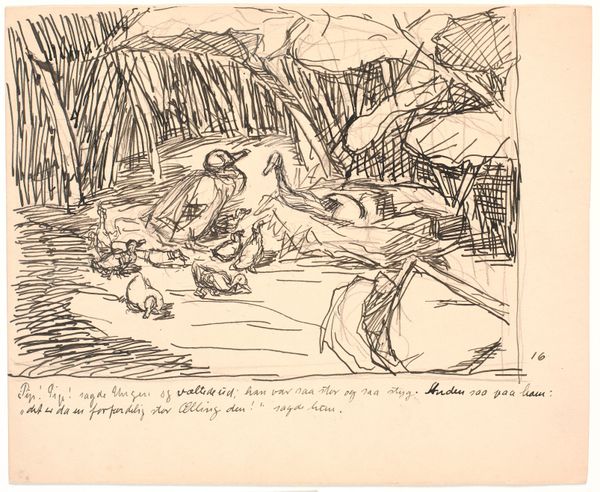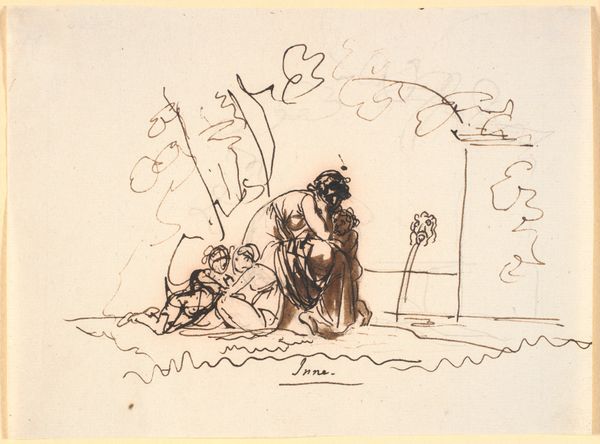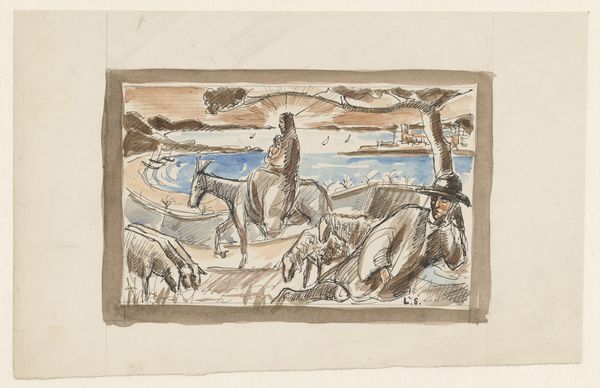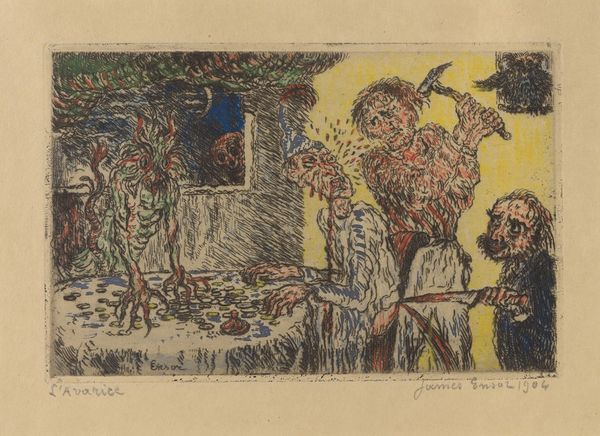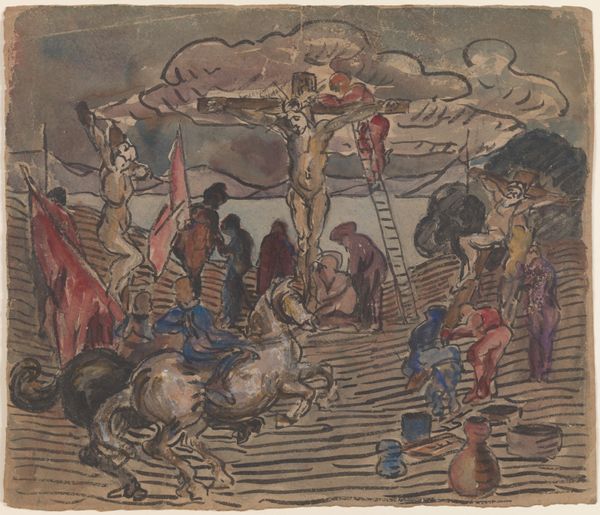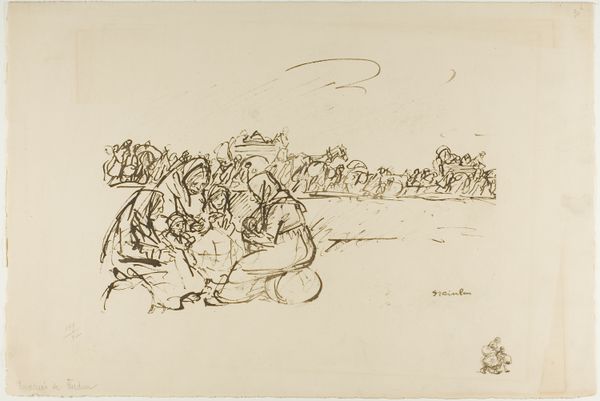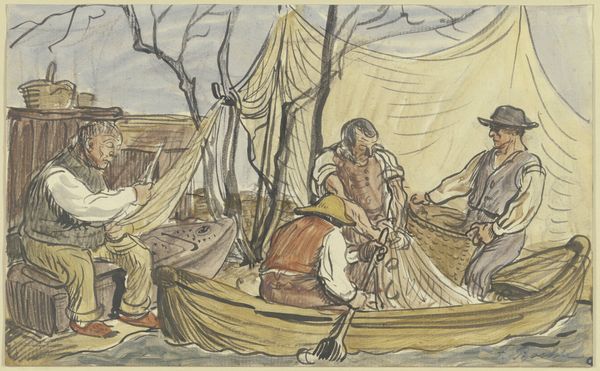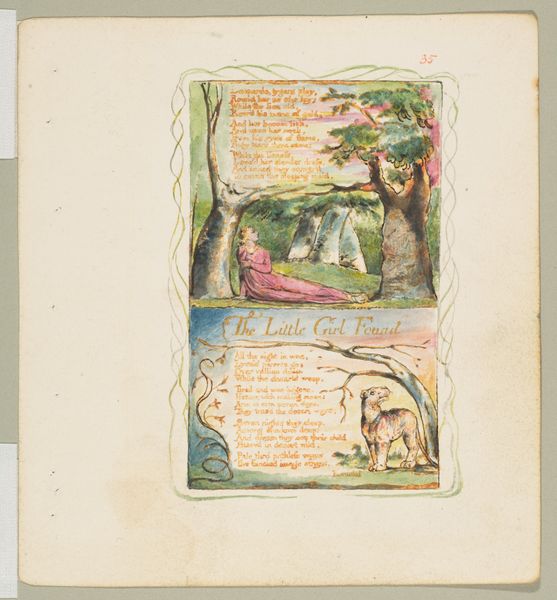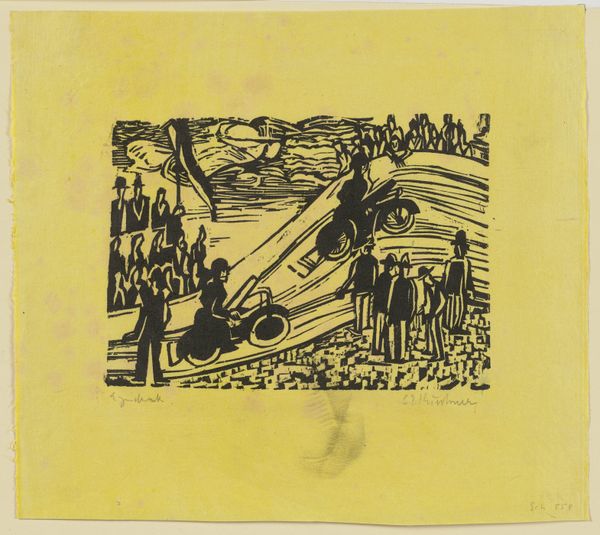
drawing, watercolor, ink
#
drawing
#
landscape
#
figuration
#
watercolor
#
ink
#
watercolour illustration
#
post-impressionism
#
nude
Dimensions: 249 × 316 mm
Copyright: Public Domain
Curator: I am immediately struck by how this evokes a sense of dreamlike stillness. There’s a melancholy, poetic air, almost as if a memory is being replayed in front of us, fading at the edges. Editor: Indeed, it's one of Paul Gauguin's Tahitian scenes, aptly named "Tahitians Fishing," dating from around 1891 to 1893. This drawing combines ink and watercolor on paper and can be found at the Art Institute of Chicago. Curator: Watercolor lends itself well to the ephemeral quality, wouldn't you agree? It captures the light shimmering on the water so perfectly. The composition is peculiar though...it feels almost divided into theatrical sets. Editor: Gauguin, following his rejection of European artistic conventions, sought an untouched "primitive" culture in Tahiti, which he often represented through idealized, exoticized lenses. Curator: True, that yearning for something 'authentic,' separate from industrialized life. You see the artist writing with a poem floating at the top, and it further builds that romanticized image, don’t you think? Are we meant to appreciate its aesthetic or grapple with its underlying colonial gaze? Editor: Both, and neither exclusively! The poem—signed "Verlaine"—and its wistful tone certainly colors the image, adding layers of complexity. Gauguin aimed to capture a world that existed outside Western influence, yet the reality was, of course, far more complicated. There were layered political powers at play. Curator: Look at how loosely rendered some elements are – almost dissolving into abstraction, versus the quite defined figures in the foreground. Editor: That blending of styles reflects, I think, a tension between Gauguin's observation and idealization, something he struggles with consistently throughout his Tahitian works. His post-impressionist brush strokes create an otherworld. Curator: A beautiful struggle it remains though. Seeing the artwork lets you reflect how cultures are viewed. A lens darkly for its place in our historical journey, but yet beautifully too in the way it pulls into his paradise. Editor: Absolutely, and recognizing the loaded, intricate history, as you put so well, we can see and examine these moments. Hopefully as a learning point forward in thinking of imagery and place.
Comments
No comments
Be the first to comment and join the conversation on the ultimate creative platform.
